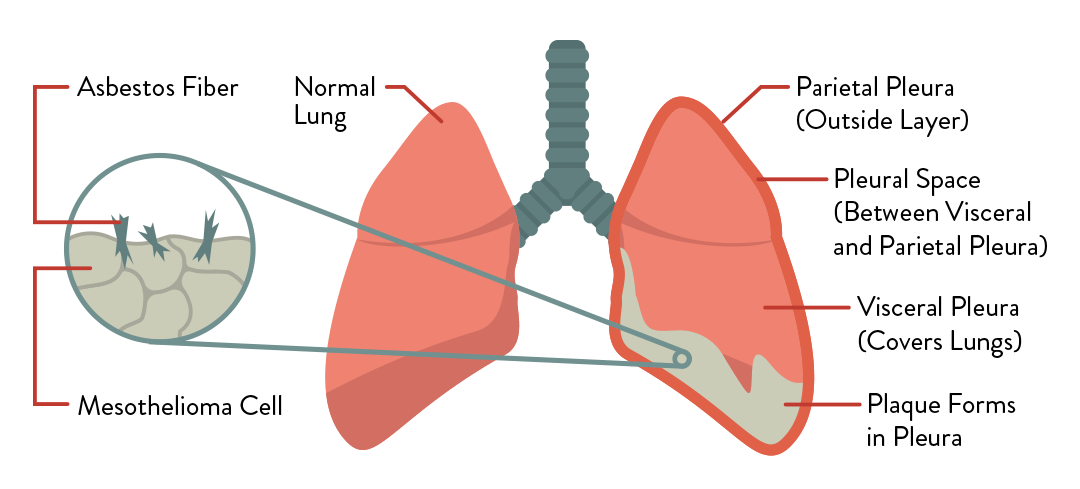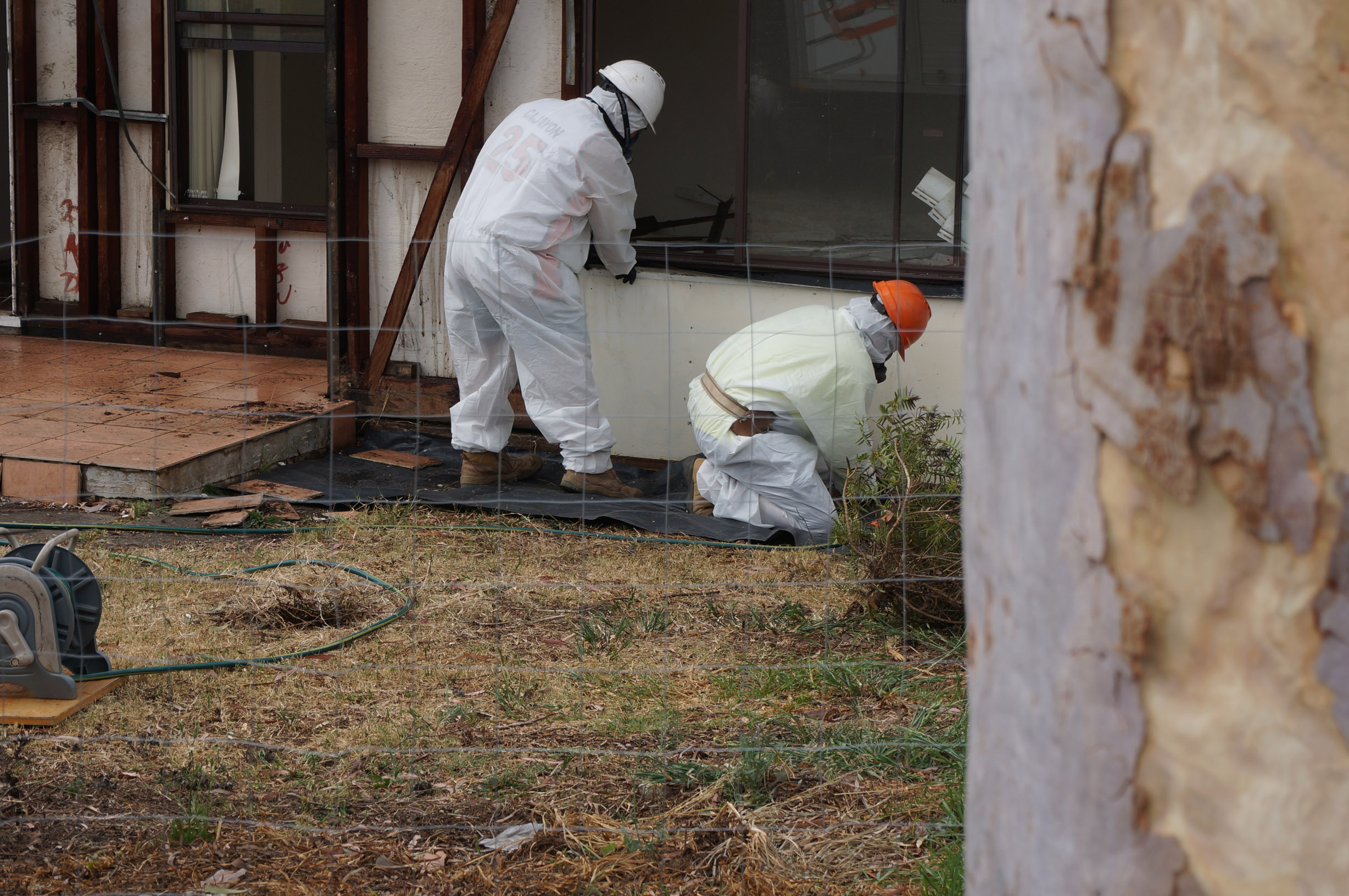Popcorn ceilings were once a popular choice for home interiors but have since fallen out of fashion due to their outdated appearance and potential health hazards. Removing them can be a daunting task, but with the right tools and techniques, it can be done safely and effectively. Follow this step-by-step guide to transform your home into a modern and safer living space.
Read moreAsbestos And Mesothelioma
The link between asbestos and mesothelioma was first reported in a study of German asbestos workers conducted in 1943. Although this study found a link between lung scarring caused by asbestos fibres - known as asbestosis - and cancer in the mesothelial cells of the lungs and chest, it wasn't until the 1960's that the link between asbestos and mesothelioma began to become widely recognised by the medical community.
Asbestos: It may look harmless, but if inhaled or ingested it can lead to serious health problems.
It took even longer for the general population and industry to take notice of the results, with asbestos being widely used in the Australian housing industry up until 1990. A total asbestos ban was put in place in Australia in 2003 but in many parts of the world, such as Russia, it is still legal to use and even mine asbestos.
Mesothelioma is a type of cancer that affects the body's mesothelial cells (the cells that cover most of the body's internal organs) and is caused by exposure to asbestos. This exposure could occur from inhalation or ingestion; usually by undertaking renovations, through contaminated talcum powder or through work.
There are three types of Mesothelioma, all of which are fatal, and can take anywhere between 10-50 years to develop.
Pleural Mesothelioma is the most common, accounting for 80-90% of all mesothelioma cases. It occurs when asbestos damages the pleural lining that surrounds the lungs and chest. As it is a respiratory condition symptoms include chest pain, shortness of breath, fluid in the lungs (known as pleural effusion) and a dry cough.
Peritoneal Mesothelioma is the second most common type of mesothelioma and each year just under 500 people are diagnosed with this condition globally. This type of mesothelioma occurs when asbestos damages the peritoneum - the thin membrane surrounding the abdomen. Individuals diagnosed with peritoneal mesothelioma usually have a higher rate of survival than those with one of the other two kinds.
Pericardial Mesothelioma, like the name implies, effects the lining surrounding the heart cavity. Because it is extremely rare, the prognosis for patients with this type of mesothelioma is usually around six months.
Home renovators should be cautious of asbestos.
Even though asbestos has been banned here for close to 15 years, Australia still has one of the highest rates of Mesothelioma in the world. In Australia 759 cases were diagnosed in 2014, and a further 675 cases were diagnosed in 2015.
This high rate of mesothelioma is primarily due to the high amount of asbestos in our existing housing supply and our nation's love of home renovations. If you suspect your house might contain asbestos, don't try and remove it yourself, do the safe thing and call in an accredited assessor or a licensed asbestos removal contractor.
Related Articles
Removing Friable Asbestos From Your Home
Until usage was curbed in the 1980's, Australia had one of the highest rates of asbestos usage per person in the world. In 2003 a total ban was placed on asbestos in Australia, making it illegal to mine, manufacture, export or import the deadly substance.
However, this ban couldn't account for all the asbestos already in the housing supply and previously we have talked extensively about the amount and dangers of this legacy asbestos hiding in Australia's homes.
This asbestos is usually found in two forms: Friable and non-friable.
The good news is that if you live in Sydney your house is likely to contain non-friable asbestos, which is the least dangerous of the two as the asbestos fibres are contained in a bonding agent, like cement. Although friable asbestos has been found in some Sydney homes, it saw more widespread use in colder parts of the country like Canberra.
Although certainly less hazardous, non-friable asbestos should still be treated with caution as any damage can break the seal and release dangerous asbestos fibres into the air.
In NSW it is legal for home owners to remove up to 10m2 of friable asbestos themselves; however, this is not recommended and is even illegal in other states, like Victoria.
Friable asbestos removal is always a task best undertaken by licensed professionals as it is a tedious and delicate process. During removal each panel of friable asbestos must be removed individually and intact while being sprayed with water to ensure no asbestos minerals become airborne.
Once the asbestos containing material has been removed it must be wrapped in plastic ad placed in a skip for proper disposal.
Overall, removing friable asbestos is safe and can even be relatively low risk if undertaken properly. However, given the margin for error, it can also be very unsafe if undertaken without thought, planning and the proper safety considerations.
Related Articles
Renovators Beware: The Dangers Of Legacy Asbestos
Up until the mid 1980's, products containing asbestos were commonly used in construction here in Australia. By the late 80's, use began to slow as asbestos-containing products were phased out in favour of asbestos free products. In 2003 a total asbestos ban was introduced, preventing the mining, manufacture, export, import or sale of asbestos products in Australia.
The 2003 asbestos ban was fairly comprehensive; however, it couldn't remove the large amount of asbestos already in Australia's housing supply. Today, homeowners who own a property built or renovated before 1990 should be aware that there is a high chance of their home containing asbestos in one form or another.
Although friable asbestos - the most common type of asbestos found in Sydney homes is relatively harmless if intact, renovation activities can cause damage and release deadly asbestos fibres into the air as a result. Renovation activities like sanding, grinding, drilling, water blasting or cutting can all cause this.
In the past Australian's diagnosed with malignant mesothelioma - a diseased caused by inhaling airborne asbestos fibres, - were those that were exposed through their work, but this is shifting and a growing body of evidence shows that renovators are at high risk of asbestos related diseases such as mesothelioma. A 2014 report released by the Australia Mesothelioma Registry supports this, revealing that of the 350 people diagnosed with mesothelioma during that year, 37.2% of those diagnosed were home renovators.
Diagram of lungs affected by Mesothelioma.
Overall Australia has one of the highest rates of Mesothelioma in the developed world. Although there is no straight forward answer as to 'why' this is the case, the explanation could lie in the large amount of asbestos in our housing supply, the Aussie 'can do' attitude and a general disregard for the risks associated with asbestos exposure.
In order to combat this, if you are considering renovating your home get educated and consider getting a licensed asbestos inspector or occupational hygienist to identify and remove any products containing asbestos that could be in your home.
If you want to find out more about renovating a dwelling containing asbestos National Asbestos Awareness Month has a great selection of free resources you can check out.
Related Articles
How Much Will It Cost To Remove Asbestos From My Home?
Asbestos is a silent menace lurking in many Australian homes. If your house was built or renovated between 1920 and 1990 there is a good chance it contains asbestos in one form or another. Sometimes hidden, sometimes in plain site, asbestos products may look harmless but if disturbed they release deadly fibres that can lead to serious health problems such as mesothelioma, lung cancers, cancer of the larynx and even ovarian cancer.
Asbestos is at the greatest risk of being disturbed during renovation or demolition and if your are considering undertaking such works then it is important asbestos is removed and disposed of by trained professionals.
Our asbestos removal crew removing asbestos sheeting from a asbestos clad fibro home.
Sure, I understand the dangers asbestos poses but how much will it cost to get it out of my house?
This is where things get a little bit complicated. A variety of factors, such as the type of asbestos present, the amount of asbestos present and the location of the asbestos present all affect the amount of time taken, and therefore the cost, of removing asbestos.
Asbestos can be found in a variety of locations around the home, such as underneath vinyl or linoleum flooring, in fibre cement products and in insulation products - just to name a few. In some cases soil may be also be contaminated with asbestos, usually in the form of chunks of asbestos sheeting.
As a general rule, asbestos products come in two forms: non- friable and friable (commonly known as 'Mr. Fluffy'). Non-friable asbestos is cheaper to remove as the dangerous asbestos fibres are incased - in cement or other material- and therefore less likely to become airborne. This in turn means less safety precautions and time are required to safely remove non-friable asbestos products.
Asbestos sheeting can easily be recognised by the wafflle patern on its underside.
However, removing non-friable asbestos is still time consuming and tedious, as each piece of product containing the dangerous fibres must be removed individually by hand, wrapped in plastic film and placed in a dumpster.
Some non-friable asbestos products like fibro sheeting can be particularly time-consuming to remove, especially if it is covered by a brick facade.
The final factor to consider is the cost of legal disposal of asbestos, which costs roughly $330 per tonne to dispose of. Obviously this means the more asbestos is present in your house, the more it will cost to safety and legally dispose of it.


















